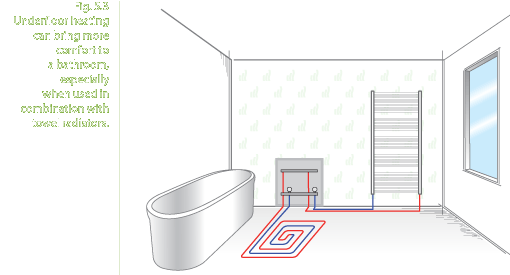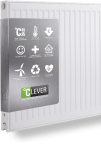- Contents
- Interview with Mikko Iivonen
- It’s time to change our way of thinking
- How insulation influences heating efficiency
- Interview with Professor Christer Harryson
- The increasing use of low temperature water systems
- Interview with Professor Dr. Jarek Kurnitski
- Significant proof
- Choosing a heat emitter
- Interview with Elo Dhaene
- Benefits to the end user

- Heat emitters > The energy source, heat source and emitters all play a vital role. But the end user, and the function of their living or working space, should always be taken into consideration too
- Only radiators offer the full flexibility required to change our understanding of homes and offices as more than black boxes
Heat emitters
The energy source, heat source and emitters all play a vital role. But the end user, and the function of their living or working space, should always be taken into consideration too
It is important to take a holistic view when discussing heating systems. The energy source, heat source and emitters all play a vital role of course. But the end user, and the function of their living or working space, should always be taken into consideration too.
It can be tempting to view a building as a single unit; a black box that requires heating. However, inside that single unit there is always a larger collection of smaller units; various offices within a building; numerous rooms inside a house. Offices will only be used 8 hours per day, while living rooms are often used only at certain times, and bedrooms only at night. Each has different heating needs and demands and so on throughout the property.
When we look further into the function of these spaces, we learn that their function can also change over time. In a family home with children, for example, as they leave infancy they will go to school, reducing the need to heat the house during school hours. As they grow older still, they will eventually leave school and start work, at which time they might also move house, and start a home of their own.
HDC checklist
Take a look at the checklist on www.purmo.co.uk/clever and try it out with your own home in mind. You may find that there are more considerations than you first thought.
Some common heating and ventilation systems
Low temperature radiator system 45/35
Central heating system where the heating water temperature is max. 55°C at design weather conditions. Heat emission to the rooms occurs in the form of heat radiation and natural convection from the radiators and convectors. They offer highly energy-efficient and comfortable heat emission in low energy buildings.
Embedded heating systems 35/28
Central heating system where the heating water temperature is typically under 45°C at design weather conditions. The most typical embedded system is the underfloor heating using floor surfaces for heat emission. Heat emission to the rooms occurs in the form of heat radiation and natural convection. Suited to those buildings with higher heat demand and bigger thermal masses. Particularly comfortable in bathrooms (Fig. 5.3), and useful in hallways near external doors, to aid evaporation of water brought in from outside when raining. Lower emission energy efficiency than low temperature radiator heating.

Ventilation air heating
Air heating system combined within the mechanical inlet and exhaust ventilation, most often equipped with heat recovery. Typically the air inlet temperature is controlled by the mean dwelling temperature. This causes temperature fluctuations and problems in retaining comfortable temperatures in a single room. Air stratification is also a common problem with this emitter, which requires the building envelope to be airtight and properly insulated in order to reach the target energy efficiency.
For cases where higher heat outputs are required, fan assisted emission units are available. Typical emitters include radiators equipped with blowers and fan coils - i.e. convectors with fan and air supply often for heating and cooling purposes.
A ventilation radiator is typically a low temperature radiator with an outdoor air intake device. A valid solution for draught free air intake when using mechanical exhaust ventilation systems.
Only radiators offer the full flexibility required to change our understanding of homes and offices as more than black boxes
Only a flexible system of heat emitters can effortlessly adapt to the changing function of modern living and working spaces. A system of independently controllable emitters that can be adjusted to suit the purpose and heating needs of individual spaces. In short, only radiators offer the full flexibility required to change our understanding of homes and offices as more than black boxes.







